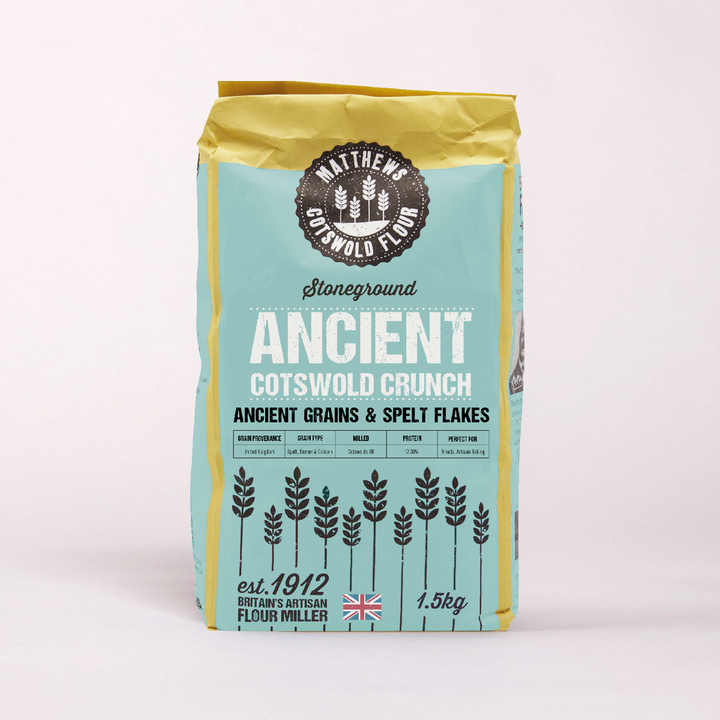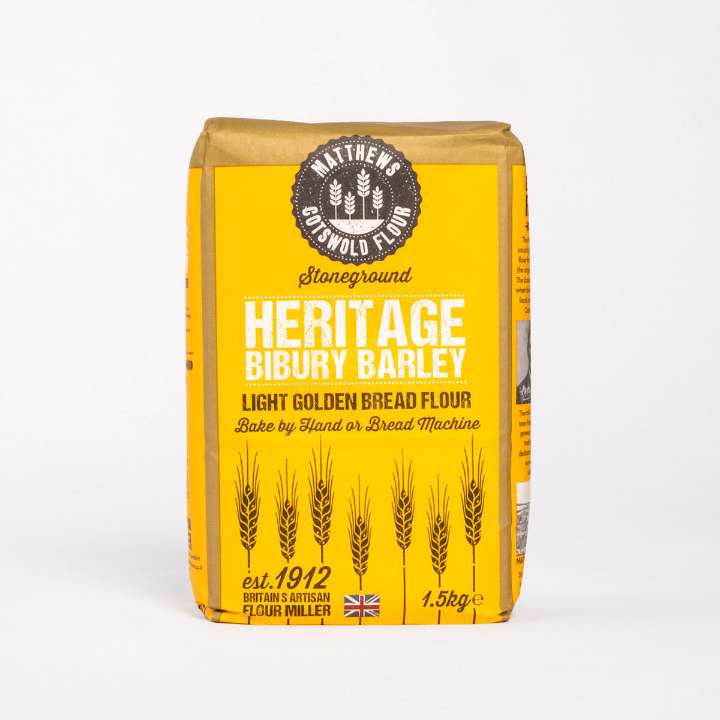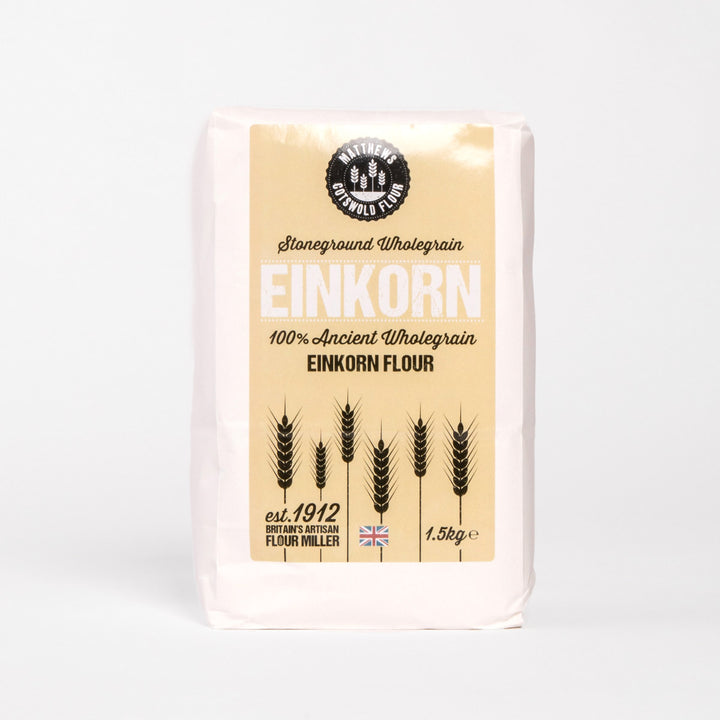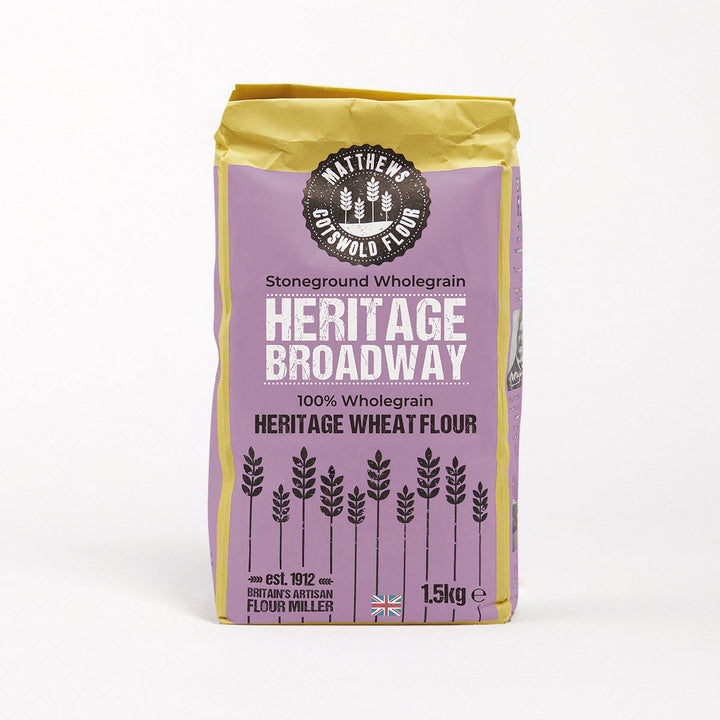Bread Making – Ultimate Guide & Tips on How to Make Bread
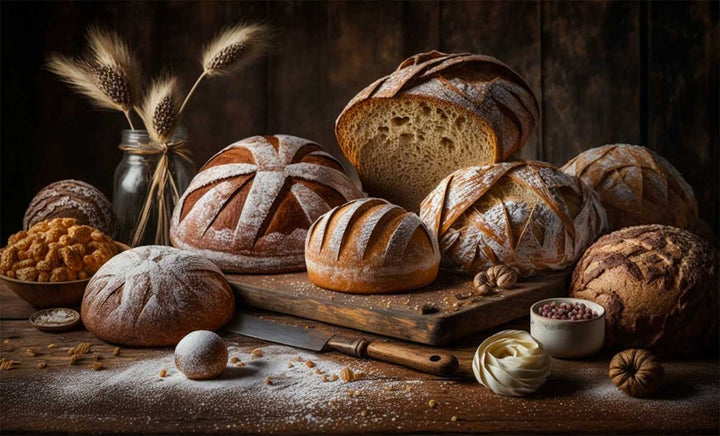
How to make bread - white and brown loaves by hand using your oven and in bread maker
Homemade bread is not as difficult to achieve as you might think. With just a few simple ingredients you can bake the perfect easy dinner rolls that will impress family and friends, or an everyday white loaf that looks shop bought. Brown rolls with the addition of a few grains or seeds can taste fabulous for a healthy addition to your table.
There are several different ways to make bread, by hand or using a bread making machine. We guide you through easy step-by-step instructions for making simple white and brown bread loaves plus soft white dinner rolls, and also give handy bread making tips and common mistakes that are made when bread making.
Leavened versus unleavened bread
Of course, there are also dozens of different types of bread; for convenience we divide them into those made with yeast and those without (‘leavened’ and ‘unleavened’.)
On this page we offer you reliable go-to recipes for ordinary everyday or leavened bread, which can be hand or machine baked.
Lean versus rich dough
Leavened bread can also be made with different types of dough - the main two types are called ‘lean’ (think hard crusty bread, pizza dough, and a basic sandwich loaf) and ‘rich’ (soft white rolls and brioche). A lean dough for bread is made without (or using very little) oil or other fats, while a rich dough contains a higher percentage of oil or butter and can contain sugar too.
You will see from the recipes on this page that our recipes for basic sandwich bread do contain a little oil, but compared with the recipe for white rolls, not nearly as much. It is this increased percentage in oil which changes the flavour and final texture of the bread.
Bread making is fun
Above all, remember to have fun when bread-making. There is loads of scope for experimenting with adding herbs, cheeses, olives, sun dried tomatoes, nuts and much more. But to begin your bread making journey, it’s good to get the basic loaves under your belt to begin with. We show you how below.
Have fun!
Top tips for making the perfect bread
-
Use the correct yeast.
Your recipe will tell you which type; if you are using a breadmaker you need fast acting or ‘easy bake’ yeast but this can be different for if you hand bake bread (although you can equally use fast acting yeast here too). The difference is taste - see our article on yeast here.
-
Measure all ingredients carefully.
It is important to get your measurements right with all your bread ingredients, as small differences in the amount of salt, yeast or water can really change the consistency of your bread. Salt in particular can also inhibit yeast activation (which is why you should mix these ingredients separately from each other).
-
Use tepid water.
The water temperature in baking bread is quite critical. Whilst it is not necessary to have a thermometer to take the temperature, you need to have an idea of what tepid ‘feels’ like.
Put your hand under the tap. It should be not cold (you need some heat for the yeast to activate) but no hotter than a little above the temperature it comes out of the tap.
Too hot and it will of course kill the yeast you need to make your bread rise.
-
Use residual heat from your oven to create the perfect temperature.
The ideal temperature for yeast to activate a bread rise is 23.8 degrees celsius. Clearly this can be difficult to achieve in many kitchens. To get a reliable result every time you can switch on your oven to the maximum it will go to, set a timer for exactly one minute (no longer or you’ll waste energy and overheat your oven) and then switch it off.
If you put your hand inside the oven it should feel comfortable. If you use a thermometer you want it to be as close to the 23 degree celsius mark as you can. Then you can put your dough inside to do its first rising knowing it’s a good temperature.
-
Don’t leave your dough for too long.
There are generally two ‘risings’ that happen in bread making. The first is known as ‘bulk fermentation’ which is allowing your dough to expand in the bowl, the second is ‘proofing’ which is the last stage done in the tin before it goes into the oven. Generally you want to be bulk fermenting your bread for around 1.5 - 2 hours and proofing your bread for around 1-1.5 hours at room temperature, no more.
The ambient temperature of the air will affect rising time, so do be mindful of this and keep checking on your bread on a hot day as it will rise much more quickly (and try and get it somewhere a bit cooler if possible). If you bulk ferment or prove for too long the carbon dioxide can actually start to dissipate and you will lose the light and airy effect you are trying to achieve.
-
If wanting to slow down bulk fermenting time choose a cold place.
Some people like to use a ‘cold bulk fermentation’ technique which is deliberately slowing down the time it takes the yeast to multiply, by placing the dough in a colder place such as a fridge or unheated room in winter, and then taking it out again to finish bulk fermenting.
This is useful if you haven’t got time to finish the bake at that time, but it also can give a more complex taste as some of the starches are turned to sugars.
-
If adding toppings prove twice.
Once the bread is in the tin ready to be baked you might often add herbs and/or salt for toppings. If this is the case it is best to do one final short proof after the toppings have gone on before it goes into the oven to stop it sinking.
-
Try different flours.
Brown and white bread rise differently (white bread rises more easily) so many people like to try stronger bread flours, such as Canadian bread flours because they have been proven more successful with helping brown bread to rise.
How to make a simple white loaf

Your everyday white loaf is not hard to master. The easiest way of making it is probably using a bread maker which will do the whole process from kneading to baking for you, or alternatively you can bake your bread in the oven by baking by hand.
With this option you can either choose to knead the dough manually by hand or alternatively if you have a tabletop mixer with a dough hook you can get this to knead the dough for you.
Classic white loaf bread recipe for hand baking
(900g/ 2lb loaf tin)
Ingredients
- 500g strong white flour, plus extra for dusting
- 7g sachet fast-action dried yeast
- 1 tsp salt
- Up to 350 ml lukewarm water
- A little sunflower oil, for greasing
Method
Stage 1 - First rise (bulk fermentation)
- Mix: Tip the flour, yeast and salt into a large bowl and make a well in the middle. Pour in most of the water and use your fingers or a wooden spoon to mix the flour and water together until combined to a slightly wet, workable dough - add a splash more water if necessary.
- Knead: Tip the dough onto a lightly floured surface and knead for at least 10 mins until smooth and elastic (or alternatively use a tabletop mixer with a dough hook).
- Rise: Place the dough in a clean oiled bowl, cover with a clean plastic bag and leave to rise until doubled in size (around 1.5 hours depending on room temperature).
Stage 2 - Proofing the dough and baking
- Knock back: Knock back the dough by tipping it back onto a floured surface and pushing the air out.
- Shape: Mould the dough into a rough rectangle shape and place in loaf tin.
- Prove: Cover with a clean damp tea towel or plastic bag and leave to prove for 30 mins.
- Preheat oven: Heat oven to 220C/fan 200C/gas 7.
- Dust with flour: Dust the top of the loaf with a little more flour and slash the top with a sharp knife if you want.
- Bake: Bake the bread for 15 mins, then reduce the heat to 190C/fan 170C/gas 5 and continue to bake for 30 mins until the loaf sounds hollow when removed from the tin and tapped on the base.
- Cool: Leave the bread on a wire rack to cool completely.
The loaf will stay fresh in an airtight container for 3 days or can be frozen for 1 month.
Classic white loaf bread recipe using a bread maker
The recipe for a breadmaker white loaf is a little different from a hand-made white loaf as it includes a small amount of additional fat (in this case oil, but many recipes use a combination of butte and olive oil or a vegetable spread). The fat helps to lubricate the dough and thus retain the gases during bread making. This in turn helps the bread to rise and keep its ‘airiness.’
Ingredients
- 1 tsp quick yeast
- 500g strong white bread flour
- 1 tsp sugar
- 1 tbsp oil
- 1 tsp salt
- 350ml water
Method
- Add ingredients to bread maker: Put the ingredients into the bread machine pan in the order recommended by the machine manufacturer. This is often wet ingredients first, followed by flour, followed by yeast tipped into a ‘well’ you make yourself in the flour. Keeping the yeast separate at this stage from the other ingredients is also critical if using the ‘delay’ setting as it stops problems with it activating too soon.
- Set machine: Turn the machine to the basic rapid bread setting.
- Crust option: Select your preferred crust option if available on the machine.
- Start: Check the pan is locked into position and start the machine (this stage should take around 3-4 hours).
- Remove: Remove the bread pan from the machine as soon as it has finished baking (this will stop it from going ‘sweaty’)
- Cool: Cool the bread on a wire rack.
How to make a simple brown loaf
Brown loaves are a delicious and healthier alternative to a white loaf. They are best tackled once you have mastered the white loaf because they take a little more skill to get perfect results.
How baking a brown loaf is different from a white loaf
- The key to a successful wholemeal loaf is to make sure there is enough water in the dough because otherwise it will result in a dry loaf. Recipes for wholemeal loaves will always contain more liquid than in a white loaf. The water element can’t be overestimated and is probably the main reason people’s brown loaves are dry or unsuccessful.
- Brown bread benefits from more resting time compared with white bread to allow the flour to absorb the water properly (however brown bread can also succumb to over development time meaning the gluten strands collapse in on themselves if left for too long, just as white can - it just takes a bit longer). Pay attention to the timings on your recipe.
- Brown bread requires careful kneading. If you knead too much the flakes of bran can cut through the gluten strands and break the chains you are trying to form to make a light and fluffy dough.
- Sugar is often in both brown and white recipes. But wholemeal bread can really benefit from the addition of a tablespoon of brown sugar or honey - the sugars help the yeast to activate and it also works well with the different flavours of the flour.
- The bran in wholemeal flour can ‘cut through’ the gluten forming network, making a flatter dough. Pre-soaking the flour and water in your wholemeal recipe avoids this by kick-starting the gluten formation needed in preparing the dough.
- Consider using ½ a 500mg tablet of vitamin c, crushed in your recipe. This counteracts the naturally occuring chemical called glutathione (not noticeable in white bread) which in brown flour prohibits the gluten strands from elongating and thus reducing the ‘stretchiness’ of your dough.
Wholemeal loaves also nearly always rely on the addition of a little strong white bread flour mixed in with brown flour to help provide the gluten needed to get the bread to rise. Using very strong wholemeal flour also helps to add the protein needed to allow the bread to rise and keep its shape. You also get a nice chewy texture and browning of the crust.
Classic brown loaf bread recipe for hand baking
Here is our go-to recipe for a simple brown loaf you’ll be wanting to come back to again and again.
Ingredients
(900g/2 lb loaf tin)
- 400g very strong wholemeal bread flour
- 100g strong white bread flour
- 1 sachet easy bake or quick instant yeast
- 1.5 tsp salt
- 50g butter (melted)
- 1 tbsp light muscovado sugar
- 300ml warm water
Method
Stage 1 - First rise (bulk fermentation)
- Mix: Mix the flours together with the yeast and salt in a big bowl. Mix in the melted butter, sugar and water.
- Knead: Tip onto a lightly flour dusted surface and knead for 10 minutes (or use the dough hook attachment on your mixer).
- Rise: Lightly grease the mixing bowl with some oil. Put the dough back in, cover the bowl with a clean plastic bag or tea towel and leave to rise until doubled in size (around 1.5 hours).
Stage 2 - Proofing the dough and baking
- Knock back and shape: Your dough will have swelled to a much bigger shape from the yeast, knocking back means gently kneading just a couple of times to take the air back out. Mould into a rectangle and place into your lightly oiled loaf tin.
- Prove: Cover the dough again with a clean plastic bag or damp tea towel and leave to prove until doubled in size again (around an hour). Preheat your oven to 200°C (fan 180°C, gas mark 6).
- Bake: Lift the tin onto the middle oven shelf and bake for 35-40 minutes, until you can lift the bread loaf from the tin and when you tap the base it sounds hollow. Cool on a wire rack.
Classic brown loaf bread recipe using a bread maker
Ingredients
- 1 tsp quick yeast
- 500g strong wholemeal bread flour
- 1 tsp sugar
- 1 tbsp oil
- 1 tsp salt
- 360ml water
Method
- Add ingredients to bread maker: Put the ingredients into the bread machine pan in the order recommended by the machine manufacturer.
- Set machine: Turn the machine to the whole wheat rapid bread setting.
- Crust setting: Select your preferred crust setting if available on the machine.
- Start: Check the pan is locked into position and start the machine.
- Remove: Remove the bread pan from the machine as soon as it has finished baking.
- Cool: Cool the bread on a wire rack.
How to make easy dinner rolls
Recipe for hand baked easy white dinner rolls
These lovely little rolls have the addition of rapeseed or your chosen oil to make them extra soft.
Ingredients
- 750g extra strong white bread flour
- 2 teaspoons sea salt
- 1 teaspoon sugar
- 1½ teaspoons instant yeast
- 6 tablespoons rapeseed, canola or sunflower oil
- 450 ml tepid water
Method
Stage 1 - First rise (bulk fermentation)
- Mix: Mix the flours together with the yeast and salt and in a big bowl. Add in sugar,oil and water.
- Knead: Tip onto a lightly flour dusted surface and knead for 10 minutes (or use the dough hook attachment on your mixer).
- Rise: Lightly grease the mixing bowl with some oil. Put the dough back in, cover the bowl with a clean plastic bag or tea towel and leave to rise in a warm place until doubled in size (around 1.5 hours).
Stage 2 - Shaping into little balls, proofing the dough and baking
- Transfer your dough onto a lightly oiled work surface: Normally you’d use a floured work surface but with ‘rich’ doughs you need to keep the extra moisture in.
- Shape and place on lined baking tray: There isn’t much need to ‘knock back’ your dough with these soft white rolls, simply removing the dough from the bowl and shaping into 12 even balls is enough and will ensure they stay light and fluffy. Leave no more than 2 ½ cm between each ball - this will ensure they touch just slightly, keeping them soft.
- Prove: Cover the little balls with a clean plastic bag or damp tea towel and leave to rise for around 40 minutes. During this time, preheat your oven to 200°C (fan 180°C, gas mark 6).
- Bake: Bake your little dough balls for 25 minutes.
- Remove from oven: For the softest top to your rolls, cover with a clean tea towel while cooling.
Common mistakes or problems with bread making
The dough has not risen
-
The water is too hot.
Water needs to be as close to 37°C/100°F as you can make it. Too hot and you;ll deactivate your yeast.
-
The ambient temperature is too cold.
Heating in an oven that has been switched on briefly for no more than a minute and then switched off can provide just the right amount of ‘heat boost’ if your kitchen is not warm enough.
-
Not enough yeast was added.
Check your yeast measurements carefully.
Bread dough feels hard or gets harder as you knead
-
Not enough water in dough.
Sprinkle your dough lightly with water - too much and you’ll end up in a soggy mess.
Bread dough is wet and sticky
Too much water added to dough or just the natural stage of dough at the beginning of kneading.
Check your ingredient measurements carefully, add a little more flour if necessary to the board, but be aware that dough becomes less sticky during the kneading process (as the natural gluten strands develop).
Dough has overflowed the bowl or tin
-
Bowl not big enough to accommodate the extra expansion room of the dough rising.
Make sure you use a bowl twice or three times the depth of your ball of dough.
Bread loaf has turned out heavy and dense or collapsed in oven
-
The tin of the risen dough was knocked and deflated before entering the oven.
Take care as you move the dough at the proving stage.
-
The dough was not kneaded or proofed for long enough to activate the yeast and develop the gluten.
Take time (especially with wholemeal bread) to knead for a sufficient amount of time and allow long enough at the proofing stage.
-
The oven is not hot enough.
This can cause the dough to ‘set’ before it has had a chance to rise properly. Take care to make sure the oven is preheated to the temperature the recipe says.
Bread loaf has overflowed the tin
-
Bread tin not large enough for amount of dough.
Check tin size.
-
Dough over-proofed (left too long).
Too many gluten strands will develop leading to an over-risen dough. Check timings for proofing accurately.
-
Bread left in oven for too long after baking.
Remove loaf as soon as possible after the bread has finished baking.
Ultimate guide to making the best bread at home.
← Older Post Newer Post →


